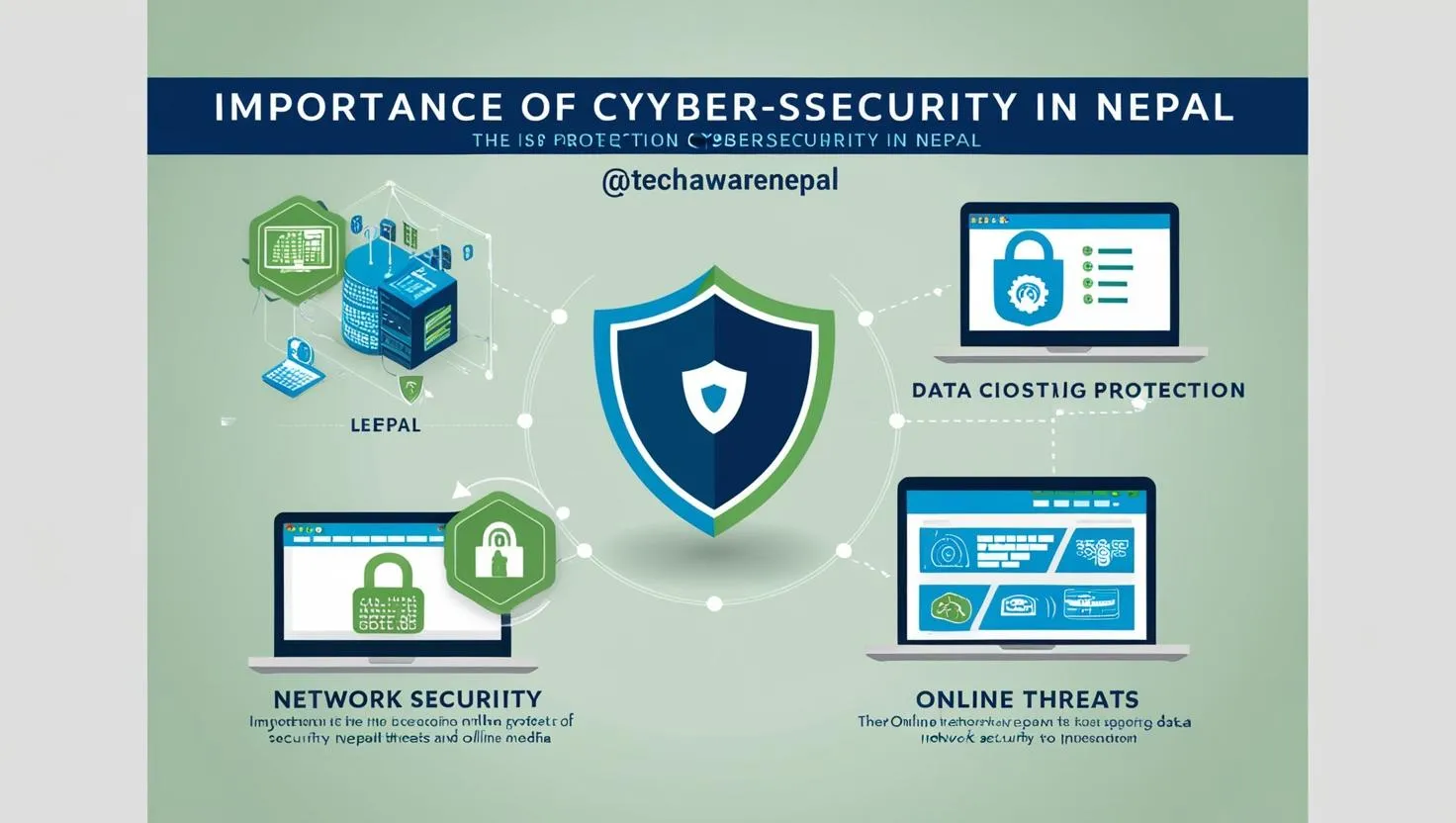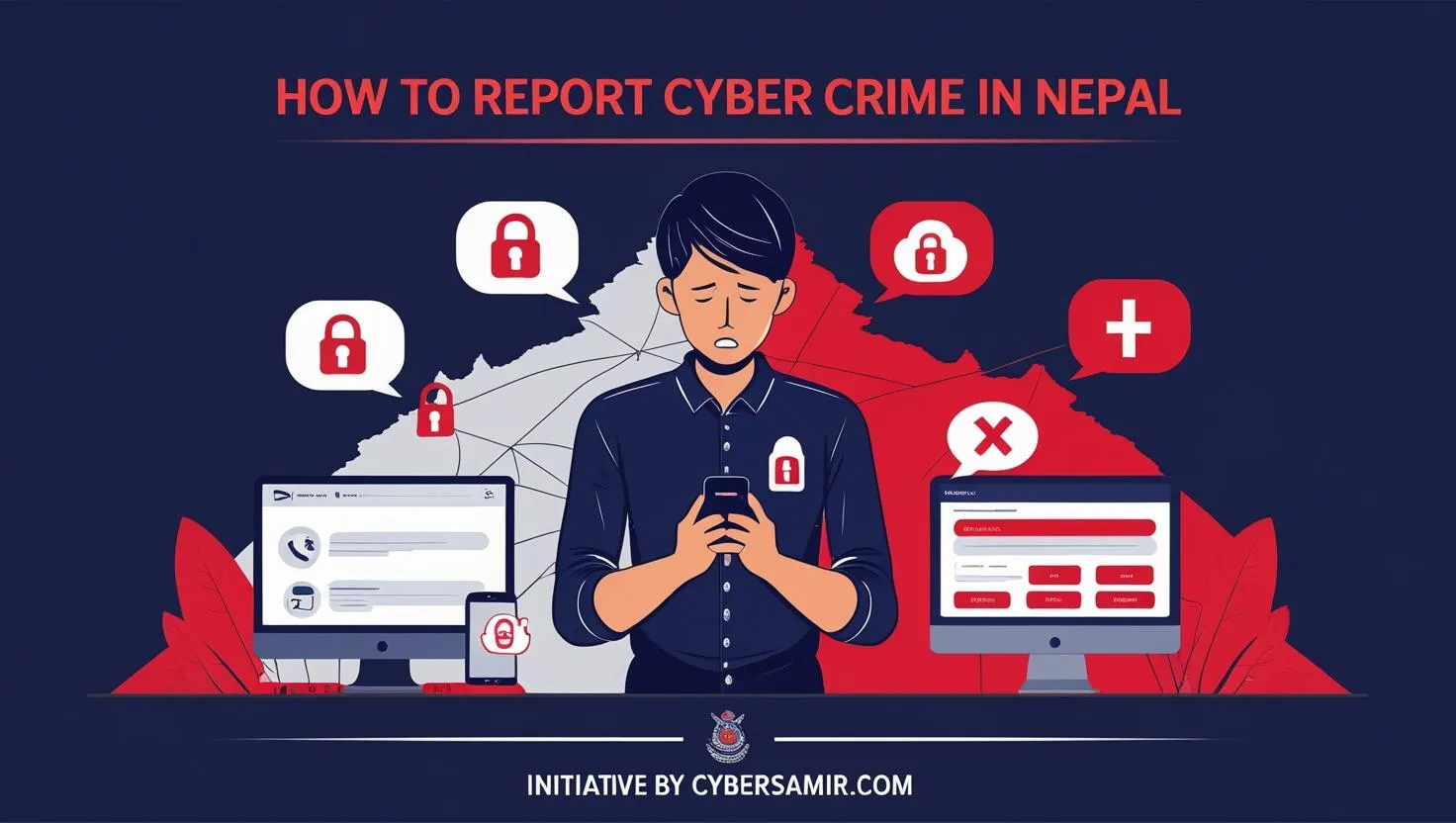
The Growing Digital Footprint of Nepal
Nepal is undergoing a digital transformation. With over 15.8 million internet users which represents more than half of the country’s population (51%) the internet has become an essential part of everyday life. From remote education and online shopping to digital banking and mobile payments, Nepalese citizens are increasingly relying on digital platforms.
But with rapid digital growth comes a silent and dangerous threat: cybercrime.
According to recent trends, cybercrime in Nepal is growing by over 30% each year. That’s a staggering figure. As more services move online, the number and sophistication of cyberattacks are increasing at an alarming pace.
Why Cybersecurity Is a National Priority
Cybersecurity isn’t just a concern for IT professionals or big corporations. It’s something that affects every internet user from students and freelancers to business owners and government officials.
“Cybersecurity is not just a technical issue it’s a life skill in the digital age.”
In today’s connected world, our personal data, financial transactions, business operations, and even national infrastructure are vulnerable to cyber threats. Ignoring cybersecurity now could lead to serious consequences tomorrow.
Common Cyber Threats in Nepal
Here are some of the most common cyber threats Nepal is facing today:
- Phishing Attacks: Fraudulent emails and messages tricking people into sharing personal information.
- Data Theft: Hackers stealing sensitive data from individuals and businesses.
- Ransomware: Malicious software that locks your data and demands payment to release it.
- Fake Social Media Accounts: Impersonation and identity theft to scam users.
- Online Scams: Fraudulent websites and payment platforms tricking users out of money.
With the rise of digital banking, e-wallets, and e-governance, these threats pose a direct challenge to the trust and safety of digital services.
The Stats Speak for Themselves
Key Indicator Value Internet Users in Nepal 15.8 million Population with Internet Access 51%Annual Growth in Cybercrime 30%+
These numbers show not only Nepal’s growing digital landscape but also the increasing risks that come with it.
Awareness: The First Line of Defense
Despite these threats, public awareness about cybersecurity remains low in Nepal. Many users:
- Use weak or repeated passwords
- Ignore software and system updates
- Click on suspicious links or download unsafe apps
- Share too much personal information on social media
- Education is our best defense.
Cybersecurity awareness must be taught in schools, discussed in offices, promoted by the media, and supported by government policy.
Simple Cyber Safety Tips Everyone Should Follow
- To stay safe online, every Nepalese internet user should follow these basic cybersecurity practices:
- Use strong and unique passwords for every account.
- Enable two-factor authentication (2FA) wherever possible.
- Update your software and apps regularly.
- Avoid clicking unknown links or downloading files from untrusted sources.
- Never share sensitive information (like OTPs or passwords) over calls or messages.
- Verify the authenticity of websites before making payments.
These small steps can protect you from major losses.
Leading the Way: Tech Platforms & Government Initiatives
In recent years, several Nepali platforms have stepped up to increase digital literacy:
- TechPana: Delivers tech news and cybersecurity content in Nepali.
2. GadgetByte: Offers tech reviews and educational content on digital safety.
3. Cyber Security Authority of Nepal: The official body setting cybersecurity policies and guidelines.
These platforms are crucial in helping users make informed decisions in the digital space. Still, there’s much more work to be done.
Government Action & Global Recognition
The Nepal government has started to prioritize cybersecurity as a national concern. According to the Global Cybersecurity Index (GCI), Nepal has shown remarkable progress in strengthening its cybersecurity infrastructure.
Ongoing efforts include:
- Developing national cybersecurity policies
- Building a cybersecurity incident response team (CIRT)
- Conducting awareness campaigns
- Collaborating with international organizations
These efforts are essential, but they must be supported by the active involvement of citizens, businesses, schools, and media.
The Road Ahead
Cybersecurity isn’t just about protecting data it’s about protecting our future. As Nepal continues to digitize, digital trust will become the backbone of our economy, education, and governance.
“A digitally strong Nepal is only possible when it is also digitally secure.”
Let’s work together as informed users, responsible businesses, and proactive policymakers — to build a safer, smarter digital Nepal.
Stay Informed. Stay Secure.
Tech Aware Nepal is committed to empowering Nepali users with the knowledge and tools they need to thrive in the digital age safely and securely.






